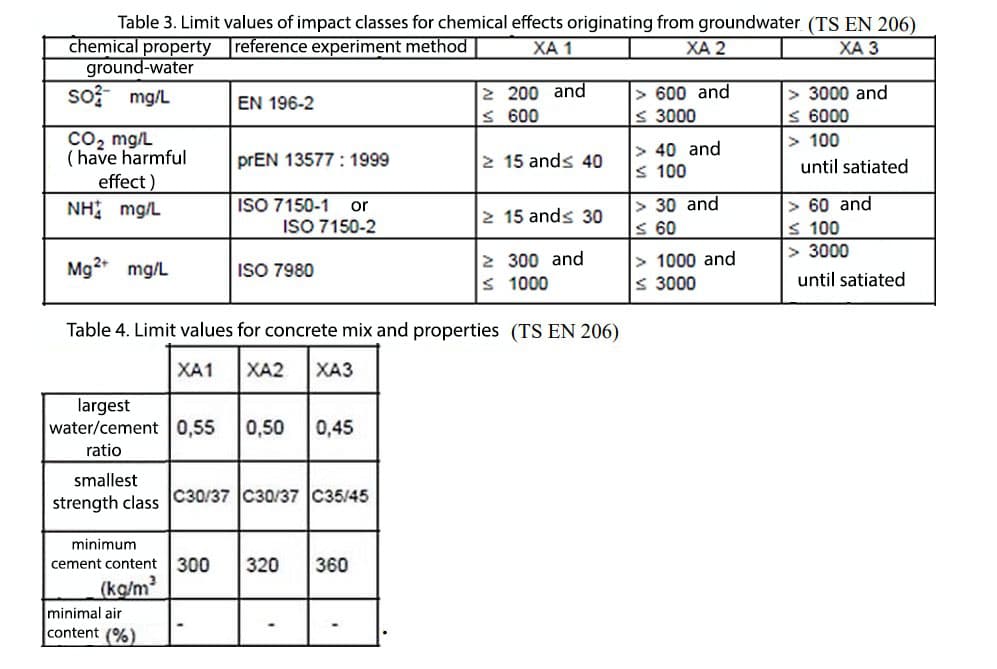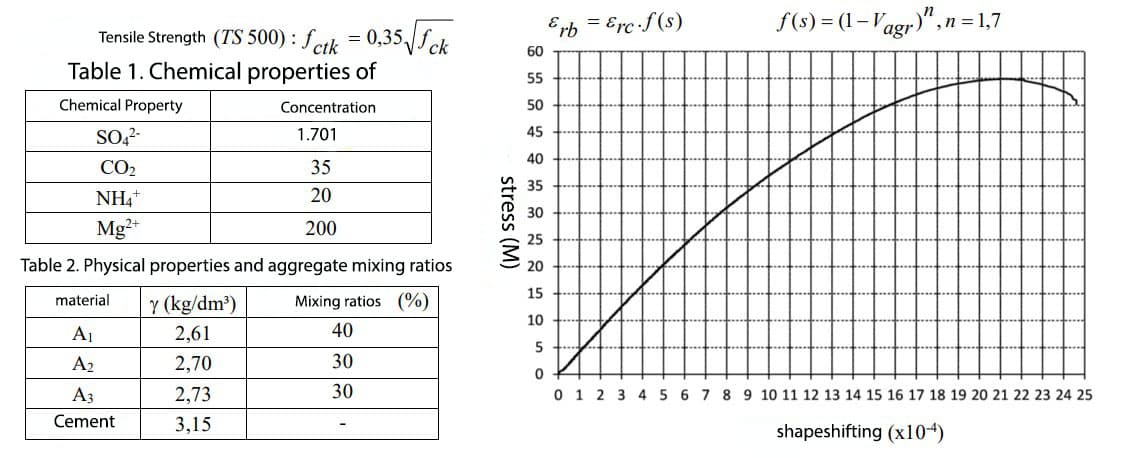Table 3. Limit values of impact classes for chemical effects originating from groundwater (TS EN 206) chemical property reference experiment method ground-water ХА 1 XA 2 ХА З so mg/L 2 200 and s 600 > 600 and s 3000 > 3000 and S 6000 > 100 EN 196-2 Co2 mg/L ( have harmful effect) NH mg/L > 40 and s 100 prEN 13577 : 1999 2 15 ands 40 until satiated > 30 and < 60 > 60 and s 100 > 3000 ISO 7150-1 or 2 15 ands 30 ISO 7150-2 2 300 and S 1000 > 1000 and s 3000 Mg2 mg/L ISO 7980 until satiated Table 4. Limit values for concrete mix and properties (TS EN 206) ХА1 ХА2 |ХАЗ largest water/cement 0,55 0,50 0,45 ratio smallest strength class C30/37 C30/37 C35/45 minimum cement content 300 320 360 (kg/m? minimal air content (%)
Designing a concrete that will be exposed to groundwater, the chemical analysis of which is given in Table 1. is requested.
a) For 1 m3 of concrete, assuming the air gap is 1%, according to the relevant impact class specified in TS EN 206 Calculate the amount of material needed. (Maximum grain size of A1, A2, A3 aggregates to be used in the mixture) has a diameter of 16 mm and is in SDYK state, and the physical properties and mixing ratios of the aggregates are given in Table 2.)
b) The ratio of cement kneading water to be used in production is 28%, volumetric shrinkage of cement paste Calculate the shrinkage that will occur in the concrete, assuming that the absolute volume of cement is 1%. from shrinkage Find the tensile stress that will occur in the concrete due to Whether cracks will occur in the concrete due to shrinkage, Considering the static elasticity modulus (secant modulus) of the concrete given below in the “stress-strain” diagram. take it and check it. Note: In the solution of (b), the values obtained in (a) will be used.


Step by step
Solved in 2 steps with 2 images









